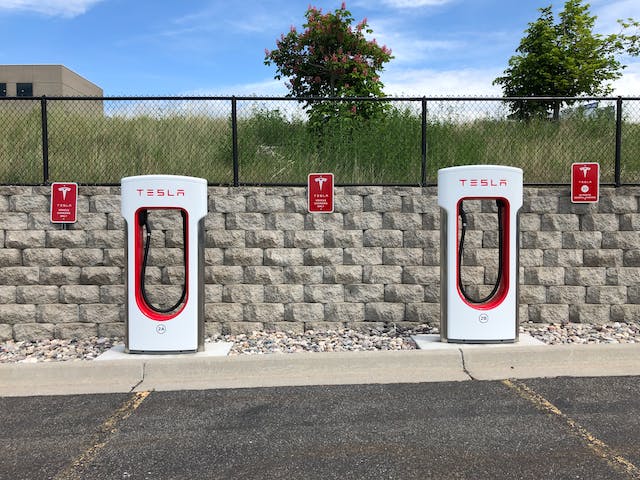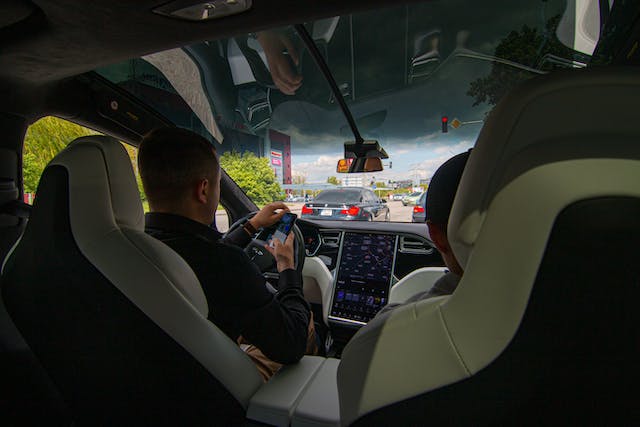Easy to Read Tesla Charging Speed Chart

Tesla electric vehicles represent a significant step towards sustainable transportation. Understanding the nuances of charging these vehicles, particularly the charging speeds, is crucial for Tesla owners. So, while understanding charge times can be complicated, we’ve put together an easy to read Tesla charging speed chart with the bonus of some tips to get the most out of your battery.
Tesla vehicles offer a range of charging options, including the commonly used Wall Connector and the rapid-charging Supercharger. Also, each Tesla model has a unique on-board charger that plays a pivotal role in determining charging speed. So, understanding the relationship between your Tesla charger, the charging station's output, and other factors is essential to optimize charging efficiency and maintain your vehicle's long-term health.
Circuit Breakers for Maximum Tesla Charge Rate
Before getting into Tesla charge speeds, you need to make sure you're equipped with the best circuit break for optimum charging performance. Different Tesla models are more compatible with circuit breakers with different amp ratings.
Tesla Model | Recommended Circuit Breaker AMP |
Model S 75D, 100D, P100D Model X 75D, 100D, P100D Model 3 Long Range | 60 amp |
Model 3 Mid Range Model 3 Standard Range | 40 amp |
Multiple Tesla cars with 2+ Wall Connectors installed for power-sharing | 100 amp |
Estimated Tesla Charging Speed Chart
The equation of calculating Tesla charging speeds can be challenging. It’s impacted by many factors (which we’ll talk about below), but the key considerations are your EV charger type, circuit breaker output, and the wattage of the electricity supply.
Here’s a breakdown of charging speeds you can expect for each setup.
Circuit breaker amps | Maximum output amps | 240 volts power in kW | Model 3 miles charged per hour | Model S miles charged per hour | Model X miles charged per hour |
100 | 80 | 19.2 kW | 44 | 34 | 30 |
90 | 72 | 17.3 kW | 44 | 34 | 30 |
80 | 64 | 15.4 kW | 44 | 34 | 30 |
70 | 56 | 13.4 kW | 44 | 34 | 30 |
60 | 48 | 11.5 kW | 44 | 34 | 30 |
50 | 40 | 9.6 kW | 37 | 29 | 25 |
45 | 36 | 8.6 kW | 34 | 26 | 23 |
40 | 32 | 7.7 kW | 30 | 23 | 20 |
35 | 28 | 6.7 kW | 26 | 20 | 17 |
30 | 24 | 5.7 kW | 22 | 17 | 14 |
25 | 20 | 4.8 kW | 19 | 14 | 11 |
20 | 16 | 3.8 kW | 15 | 11 | 8 |
15 | 12 | 2.8 kW | 11 | 7 | 5 |
Factors Affecting Charging Speed

The rate at which a Tesla charges is not constant and can be influenced by various factors. Understanding these can help Tesla owners maximize charging efficiency:
- Battery Size: Larger batteries may require more time to charge fully.
- Initial State of Charge: Batteries that already have a higher charge level will charge more slowly, a characteristic of lithium-ion technology.
- Ambient Temperature Conditions: Extreme cold or heat can impact the efficiency of the charging process, potentially slowing it down.
- Voltage and Amperage of the Charging Station: The power output of the charging station (measured in volts and amps) significantly impacts charging speed. Higher voltage and amperage offer faster charging.
- Charger Type: Different types of chargers, like Tesla's Superchargers, Wall Connectors, or public charging stations, offer varying charging speeds.
- Battery Condition: The overall health and age of the battery can influence charging efficiency. Older batteries might not charge as quickly as newer ones.
- Software Version: Tesla frequently updates its software to optimize charging algorithms. The latest software versions can potentially improve charging speeds.
- Vehicle's Onboard Charger Capacity: Each Tesla model has a specific on-board charger capacity, which can limit the maximum charging speed regardless of the external charger's capacity.
- Usage Patterns: Frequent fast charging or charging to full capacity can affect the battery's ability to charge quickly over time.
As of 2022, there were over 1.4 million Tesla’s on the road in the US. With that number continuing to rise, it’s crucial new owners familiarize themselves with how to optimize their charging routine to preserve the battery.
Practical Tips for Tesla Owners
1. Evaluate Your Daily Driving Needs
Choose a home charging setup that matches your typical daily driving distance. For shorter daily commutes, a lower-powered charger might suffice, while longer distances might benefit from a higher-powered home charger.
2. Locate Nearby Supercharger Stations
Familiarize yourself with Supercharger locations on your regular routes. These stations offer fast charging, making them ideal for quickly replenishing your battery while traveling.
3. Keep Your Tesla Software Up-to-date
Tesla regularly releases software updates that can improve charging efficiency. Ensure your vehicle is updated with the latest software to take advantage of these improvements.
4. Use Scheduled Charging
Take advantage of off-peak electricity rates by scheduling your charging during these times. This not only saves on electricity costs but also helps in managing grid demand.
5. Precondition the Battery
Before a long trip, precondition your Tesla's battery using the Tesla app. This process warms up the battery to the optimal temperature for efficient charging, especially in colder weather.
6. Avoid Charging to Full Capacity Daily
To maintain battery health, it's recommended to charge up to 80-90% for daily use, reserving 100% charging for long trips.
7. Use Regenerative Braking
Tesla vehicles feature regenerative braking, which recovers energy during deceleration and feeds it back to the battery. Utilizing this feature effectively can reduce the frequency of charging stops.
8. Monitor Battery Health
Keep an eye on your battery's health and charging patterns. If you notice significant changes in charging speed or capacity, consult with a Tesla service center.
9. Plan Your Route with Charging Stops
For longer trips, use Tesla’s trip planner or other EV route planning tools to identify optimal charging stops along your route, considering your electric vehicle’s range and available charging stations.
Absolutely, adding a "Frequently Asked Questions" section can enhance the utility and engagement of your blog. Here's how it could look:
Frequently Asked Questions
How long does it take to fully charge a Tesla?
The time varies depending on the model, battery size, and type of charger used. Typically, charging with a home charger can take up to 12 hours while Superchargers can charge up to 80% in about 30 minutes.
Can I use non-Tesla chargers for my Tesla?
Yes, Teslas can be charged using various third-party chargers, but you may need an adapter depending on the connector type.
Is it bad to charge my Tesla every night?
Regular charging is generally fine, but it's recommended to maintain the charge between 20% and 80% for optimal battery health.
How does temperature affect Tesla's charging speed?
Extreme temperatures, especially cold, can slow down the charging process. Preconditioning the battery can help optimize charging in these conditions.
Does frequent Supercharging harm the battery?
While occasional Supercharging is fine, relying on it too frequently can affect the long-term health of the battery.
Can software updates affect charging speed?
Yes, Tesla's software updates often include enhancements that can improve charging efficiency and speed.
In Summary
Understanding Tesla's charging speeds and the factors that influence them is key to maximizing the efficiency and convenience of owning a Tesla. While the Tesla charging speed chart provided gives a general idea, owners should also refer to their vehicle’s charging menu for model-specific information, as not all trims are covered in these charts. By being informed and prepared, Tesla owners can enjoy the full benefits of electric vehicle technology.
Some of our other Tesla and EV blogs you might like to read are:
Charging Stations vs. Gas Stations: Which is Cheaper?

